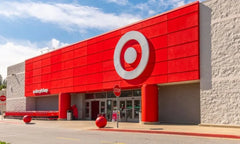
Wayfair's Perigold Opens First Brick-and-Mortar Store in Houston
Table of Contents
- Key Highlights
- Introduction
- The Houston Store: A New Era for Perigold
- Wayfair's Strategy: Bridging Online and Offline Retail
- Industry Implications: Navigating Economic Challenges
- Future Developments: More Stores on the Horizon
- Conclusion
- FAQ
Key Highlights
- Perigold's Expansion: Wayfair's luxury home brand, Perigold, has launched its first physical store in Houston, marking a significant step in its retail evolution.
- Store Features: The 20,000-square-foot flagship store showcases luxury home brands and immersive designer displays.
- Market Strategy: This opening aligns with Wayfair’s strategy to enhance its offline presence amid a challenging home furnishings market.
Introduction
In a landscape where online shopping dominates, the decision of Wayfair's luxury retail brand Perigold to open its first brick-and-mortar store in Houston serves as a bold statement about the future of home furnishings. This move comes at a time when the retail sector is witnessing a shift in consumer behavior, with many brands reevaluating their online and offline strategies. The Houston store, a 20,000-square-foot flagship located in the upscale Highland Village shopping center, aims to provide a tactile experience for customers who are increasingly seeking personalized, immersive shopping environments.
The Houston Store: A New Era for Perigold
Perigold's Houston store is designed to appeal to affluent consumers looking for high-end furniture and décor. The store features over 150 luxury brands, including Visual Comfort, Century Furniture, Oly, House of Rohl, and Theodore Alexander. Customers can explore curated displays from renowned designers like Marie Flanigan and Julie Neill, which emphasize not only the products but also the design philosophy behind them.
Historical Context of Luxury Retail
The luxury retail sector has undergone significant transformations in recent years. With the rise of e-commerce platforms, many traditional retailers faced challenges in maintaining market share. However, the tactile experience of physical stores has proven crucial in sectors like home furnishings, where customers often want to see, touch, and feel products before making a purchase.
The Highland Village shopping center, where the Perigold store is located, has been a prominent retail destination since 1957, catering to a clientele that values luxury and exclusivity. This strategic location is expected to attract both local residents and visitors looking for upscale home design solutions.
Wayfair's Strategy: Bridging Online and Offline Retail
Wayfair's decision to open a physical store is part of a broader strategy to solidify its presence in the luxury market. According to Rebecca Ginns, global head of Perigold, “Opening our first physical store is a transformative step for Perigold, and there’s no better city to begin this journey in than Houston.” This sentiment underscores the brand's commitment to creating a unique shopping experience that resonates with design-conscious consumers.
The Growing Importance of Physical Stores
While e-commerce continues to thrive, many retailers are recognizing the value of an omnichannel approach. A physical presence allows brands to strengthen customer relationships, enhance brand loyalty, and provide personalized services that online shopping cannot replicate. For instance, the new Perigold store enables customers to engage directly with products and receive expert advice from in-store design consultants.
Industry Implications: Navigating Economic Challenges
The home furnishings sector has faced numerous challenges in recent years, particularly following the COVID-19 pandemic, which disrupted supply chains and altered consumer spending patterns. Despite these setbacks, Wayfair's expansion into physical retail indicates a shift toward recovery and adaptation in a competitive market.
Wayfair's latest earnings report reflected a complex landscape: while U.S. revenue saw a modest increase of 1.6% to $2.4 billion, the company reported a 5.4% decrease in its customer base, indicating the need for innovative strategies to attract and retain customers. The launch of the Houston store may serve as a catalyst for revitalizing interest in the brand and expanding its reach.
Real-World Examples of Successful Retail Expansions
Several companies have successfully navigated similar challenges by enhancing their physical retail presence. For instance, brands like Warby Parker and Casper have integrated online and offline experiences, allowing customers to explore products in-store while also providing seamless online purchasing options. These models emphasize the importance of creating engaging customer experiences, which Perigold aims to replicate through its Houston location.
Future Developments: More Stores on the Horizon
Following the Houston store's opening, Wayfair has plans to expand its physical footprint further. A second Perigold store is set to open in West Palm Beach, Florida, later this year, showcasing the brand's commitment to establishing a robust presence in key markets. This strategy aligns with overall trends in the retail sector, where physical stores are being viewed as essential components of a holistic shopping experience.
Additionally, Wayfair has been gradually increasing its physical store portfolio, with plans for more locations in Massachusetts and even larger format stores in other states. This move reflects an understanding that while online shopping will remain a significant driver of sales, the value of in-person experiences is irreplaceable.
Conclusion
Wayfair's Perigold store opening in Houston marks a significant milestone in the evolution of luxury home retail. As the brand forges ahead with its omnichannel strategy, the emphasis on personalized experiences and high-quality products is expected to resonate with today's discerning consumers. The success of this venture could set a precedent for other online retailers contemplating similar expansions, ultimately shaping the future of the home furnishings market.
FAQ
What brands are featured at Perigold's Houston store?
The Houston store features over 150 luxury home brands, including Visual Comfort, Century Furniture, Oly, House of Rohl, and Theodore Alexander.
Why did Wayfair choose Houston for its first physical store?
Houston was selected due to its vibrant design community and engaged customer base, making it an ideal location to launch Perigold's first brick-and-mortar store.
How does the opening of this store fit into Wayfair's overall strategy?
The opening of the Houston store is part of Wayfair's strategy to expand its offline presence, providing customers with a tactile shopping experience and enhancing brand loyalty.
What challenges is the home furnishings market currently facing?
The home furnishings market is grappling with economic uncertainties, supply chain disruptions, and changing consumer behaviors post-pandemic, impacting sales and customer engagement.
Are there plans for more Perigold stores in the future?
Yes, Wayfair has plans to open additional Perigold stores, including a second location in West Palm Beach, Florida, later this year, as part of its broader retail expansion strategy.
Power your ecommerce with our weekly insights and updates!
Håll dig uppdaterad om vad som händer i handelsvärlden
E-postadress



